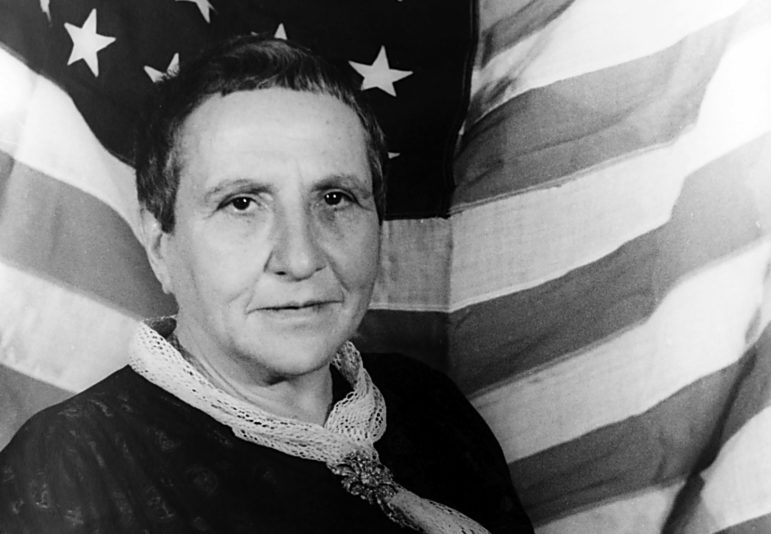
Carl van Vechten/Library of Congress
Poet Gertrude Stein. If you told her she was on the ALST, would she like it? Would she like it if you told her?
Gertrude Stein was born in Allegheny, Pennsylvania, on February 3, 1874. Her father, Daniel, was a German Jewish immigrant who had made a fortune in the American railway boom of the nineteenth century but held, somewhere, the idea and hope of the kind of polish a feeling for European life might give his children. When Gertrude was a girl, he moved the family briefly back across the Atlantic before finally settling in Oakland, California, where Gertrude spent her teen years. It was a well-rounded, prosperous, comfortable beginning, one intended to produce a well-rounded, prosperous life with all the usual accoutrements of family, stability, and friends. In fact, however, it produced a woman who was to become one of the most important aesthetic arbiters of her day. Stein caught a taste for Europe early and realized quickly that she would never be at home in the United States. “America is my birthplace,” she later observed, “but Paris is my home town.” It wasn’t only that the puritanical traditions of American life chafed against her modern sensibility and bohemian habits; it was also that Europe was where she was most likely to see what interested her most: a collision between old and new.
Question: In Paragraph 1, the repetition of the phrase “well-rounded, prosperous” emphasizes
- the sophistication of Stein’s family
- the predictability of the life Stein rejected
- the flowering of Stein’s creative powers
- the contempt for convention Stein embodied
* * * *
The above question comes from a study guide for the Academic Literacy Skills Test (ALST), which was part of the certification testing program for New York State until Monday, when the Regents by emergency order ended its use.
In the Regents’ public statement on the decision, the sole focus was on the exam’s utility, or lack thereof. Describing the findings of a teacher-testing task force whose recommendation guided the Regents’ move, NYSED said, “Concerns included the cost of the exam, the ongoing need for the exam in light of the other required exams and the total number of exams required for certification.”
Media coverage of the decision focused on another dimension of the discussion, however: the disparate performance on the test by Black and Latino teaching candidates. According to the Times-Union, “In the past three years, just 38 percent of black candidates and 46 percent of Hispanic candidates passed the test compared to 69 percent of white test-takers.”
The Regents on Tuesday defended the move against the suggestion that they’d moved to weaken standards. While pass rates on the other NYS teacher exams also vary among racial and ethnic groups, the gaps are smaller, the overall level of success is higher and the pattern of disparity is different, as the chart below (with statistics the Times-Union published) illustrates.
Pass rates
| Academic Literacy Skills Test | Educating All Students | edTPA | |
| White | 69% | 97% | 79% |
| Black | 38% | 85% | 61% |
| Hispanic | 46% | 88% | 78% |
| Asian | 53% | 88% | 82% |
| Native American | 54% | 90% | 74% |
The Regents say they will work with the publisher of one of the other teacher tests to incorporate more literacy elements into it.
You can try your hand at the multiple choice questions in the state study guide here, and check out longer response questions and sample answers here.
As for the example above …
Answer: B. This item requires examines to analyze how specific word choices shape meaning or tone. In Paragraph 1, the author’s repetition of the phrase “well-rounded, prosperous” focuses attention on the stable, orderly world that Stein left behind when she decided to pursue her fascination with the “collision between old and new” models of living in Europe.









One thought on “Try the Teacher Literacy Exam NYS Just Dropped Amid Concerns About Race Disparities”
Great. Just what NYC needs. More bad semi-literate teachers.